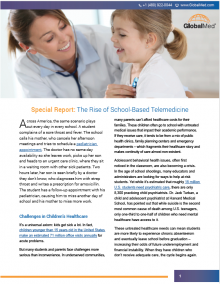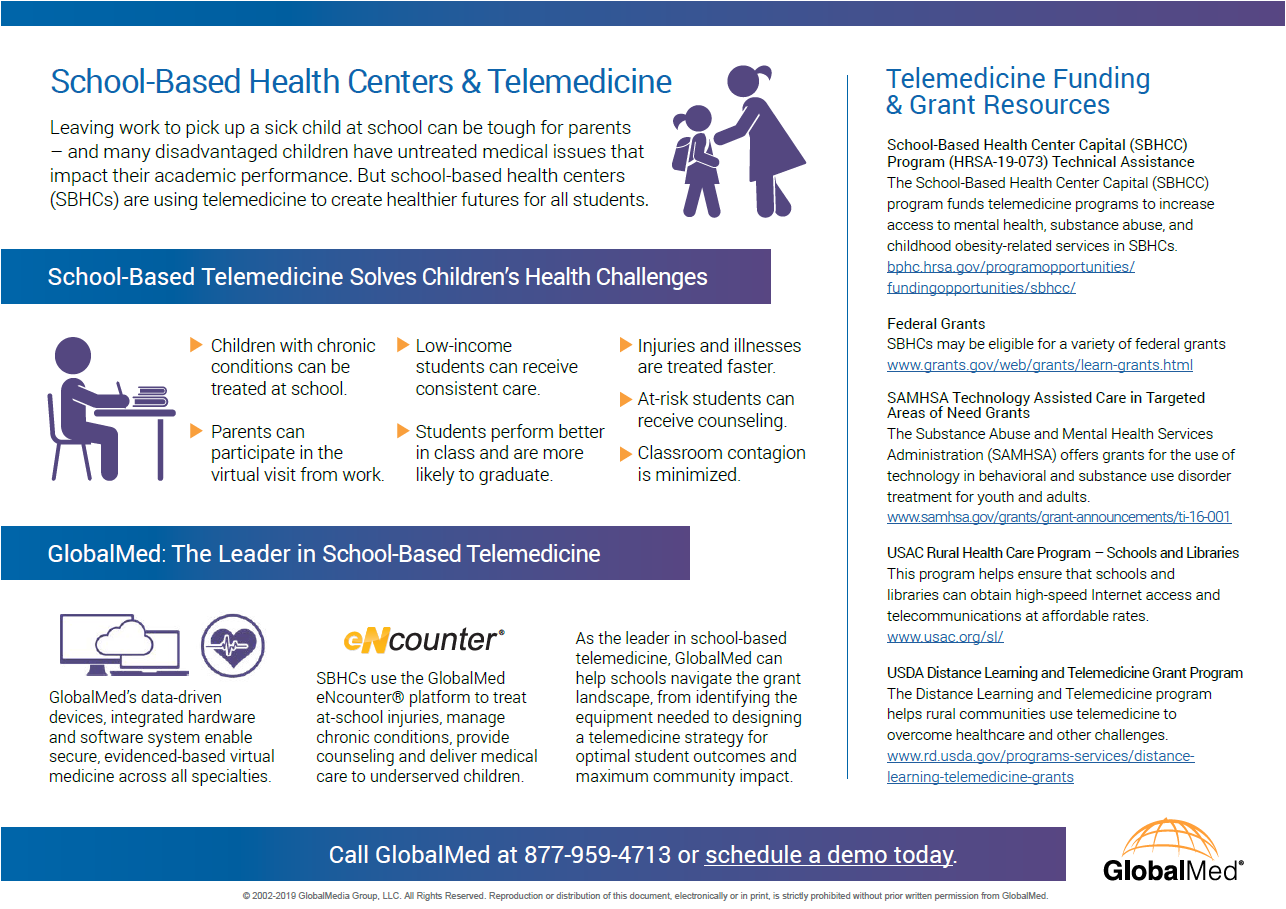
Hospitals and universities have something in common: they often go beyond their campuses to help their communities. That’s especially true when they come together in an academic medical center (AMC), which acts as a hybrid of medical school, teaching hospital and university. AMCs often produce cutting-edge research and important clinical trials; in fact, AMC research teams have driven major medical breakthroughs, including the development of the polio vaccine and the first use of gene therapy for cystic fibrosis.
Academic medical centers also train future physicians on new and advanced ways to care for patients – so it’s not surprising that they’re leading the charge on telemedicine adoption.
Leading the Virtual Vanguard
Because they are fueled partly by innovation, many academic medical centers strive to build telemedicine fluency in the next generation of providers. One example is Texas Tech University’s Frontier In Telemedicine Training Lab, which trains medical professionals from all over the U.S., in addition to educating Texas Tech medical students.
Typically the AMC curriculum covers using virtual technology, practicing evidence-based medicine remotely and expanding care delivery to reach the underserved. But incorporating telemedicine into medical education can also provide the benefit of specialized training resources:
- A telemedicine simulation training lab can increase didactic scope by expanding access to patient cases and expert clinicians beyond the immediate location. For instance, a surgery resident physician in West Virginia might consult with trauma surgeons in Chicago about treatment protocols for gunshot wounds; a physician assistant student at Loma Linda might train with a Lyme disease specialist at the Mayo Clinic.
- Virtual health provides a useful portal for graduate medical programs designed to build skills in treating a broad range of conditions. Providers can earn continuing medical education (CME) credits for rare conditions and unique cases they would not otherwise experience.
- Telemedicine instruction can reduce training inequalities in disparate geographical regions – and help clinicians become knowledgeable about the management of local diseases and conditions.
- Providers can become adept at managing emerging public health threats, learning to enhance detection and leverage evidence-based diagnoses.
Improving Correctional Healthcare
In addition to formal training, academic medical centers are using telemedicine to transform healthcare outcomes in their communities and beyond. They’ve been especially successful with correctional managed care.
Anyone familiar with healthcare delivery in prisons and jails knows how much of a challenge it can be. Inmates typically need more care than the general population, as many enter the system with chronic and infectious diseases. Life sentences have also created a population of elderly prisoners with end of life medical needs. However, it’s not always easy to find physicians willing to work at remote prison locations. There’s also a considerable risk factor. 45,000 inmates leave prison each month for care – and some have escaped or assaulted guards and hospital personnel.
With telemedicine, academic medical centers keep inmates within prison walls, minimizing risk and reducing transportation and security costs. Virtual care also reduces inpatient hospital days and addresses issues before they require costlier care. In one impressive example, Texas Tech University Health Sciences Center and the University of Texas Medical Branch partnered with The Texas Department of Criminal Justice (TDCJ) on a telemedicine program that stopped 85 percent of inmates from leaving the prison for care – and ultimately saved the TDCJ $780 million over 14 years.
School-Based Health Centers (SBHC)
Student health is another area being transformed by academic medical centers. At first glance, the benefit of telemedicine in schools seems obvious. Instead of a mother leaving work to pick up her child with a sore throat, a pediatrician can assess the student right there at school. But academic medical centers are creating health centers near or within schools to change health outcomes on a much grander scale.
In underserved, immigrant, rural and other communities, those telemedicine programs often offer the only medical care available to local children. Even when their parents are unwilling or unable to arrange treatment for them, these students can be seen by pediatricians, dentists, nurse practitioners and other providers. The advantages are manifold:
- Because students don’t need to wait for appointments, their illnesses and injuries are treated faster – minimizing classroom contagion and lost instruction time.
- Telemedicine can connect students, parents and providers for smarter care coordination, better cost control and stronger patient outcomes.
- Receiving treatment can help students improve academic performance and increase high school graduation rates.
- Providers can remotely treat children with complex or chronic conditions, helping them stay in class and enjoy stronger peer relationships.
- Because AMCs typically offer physicians from a diverse range of specialties, they can bring targeted expertise to children in communities without those resources.
- At-risk students can receive counseling and behavioral healthcare, helping them address childhood obesity and depression while minimizing social isolation and academic failure.
- Children can continue treatment even at summer camp, childcare centers, after-school activity clubs, juvenile detention centers or traveling with their families.
Building a Virtual Future
21st century healthcare is a potent brew of initiatives to reduce costs and partner technological ingenuity with compassionate access to care. By expanding telemedicine adoption, academic medical centers are driving both. Just as they’ve been on the forefront of research breakthroughs, AMCs are leading virtual care breakthroughs in today’s environments and tomorrow’s physicians.


